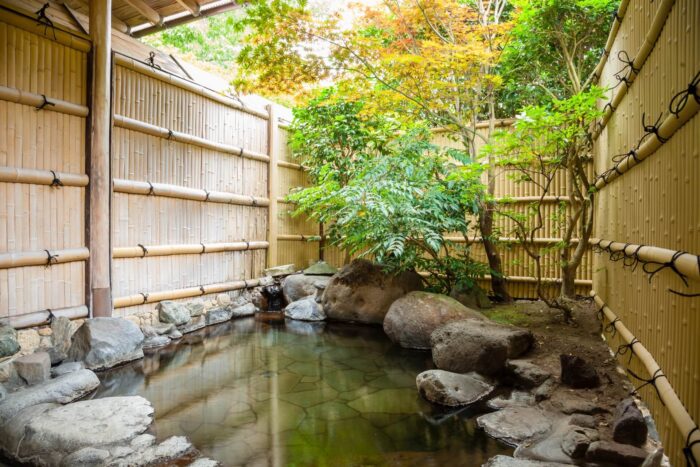
Last Updated: 23 Dec 2024 Waiting Around in Japan
“Hurry up and Wait”
A couple of months ago I was interpreting for a group of technical specialists from a Japanese company that was one of several contractors working on a project for an American customer. The project was quite complex, with many different variables that made scheduling very difficult to predict. On top of that, each of the contractors had to take turns working on a large machine. Most of the time, it was not possible for technicians from more than one company to be inside the machine at one time. Everyone was expected to stand by until needed. It was a classic “hurry up and wait” situation, because any delay in one company’s piece of the work affected everyone else’s work and the entire schedule.
According to the Japanese, their work was organized differently in Japan, and although in Japan some delays were inevitable, they had not experienced this type of work schedule before. The Americans, who were veterans of this type of project, said it was always this way.
Which group seemed more upset at being made to wait, the Japanese who were unfamiliar with the system or the Americans who were expecting to hurry up and wait? If you guessed the Americans, you were right. The American technicians seemed very agitated and kept complaining, “This is so typical, standing around and doing nothing.” The Japanese, on the other hand, never said they were standing around “doing nothing.” They said, “It is more tiring to wait than to do the work.” In other words, waiting was “doing something,” not a complete absence of action. For Japanese, waiting is active. For Americans, waiting is passive and feels like a loss of control. Knowing about the differences in time perception and attitudes Japanese and Americans hold towards waiting can save us frustration when working together.
Waiting at the Station
After graduate school, I taught Japanese for several years at universities in the Atlanta area. In their first year of study, students learn that “at a (location)” is expressed differently according to whether they are places of existence (using the particle “ni” for example, “He is at the station 駅にいます”) or places where action takes place (using the particle “de,” “He is eating at the station 駅で 食べています”). But what about “He is waiting at the station”? Each year almost 100% of my American students chose the existence construction and not the action construction. “Why is “waiting” an action?” they always asked. Students who could accept quickly this aspect of Japanese grammar were often the ones who continued on to proficiency later. Naturally “he is waiting at the station” is a favorite trick question on exams, because so many American students have difficulty with it.
Later, when I taught Japanese to an American executive (from an excellent textbook aptly called Japanese for Busy People), and we got to the “waiting at the station” lesson, he said “Aha, waiting is an action! Now I get it! Waiting is a strategy.” In fact, medieval Japanese military manuals contain strategies for waiting and forcing the other side to make the first move. This is in contrast to Americans tending to prefer the strategy of “first mover advantage” and being mindful of “opportunity cost.”
Good Things Come to Those Who Wait
In Japanese folklore there are many stories about people who wait almost beyond human endurance and are rewarded for their patience. For example, the man who waits for one hundred days in the snow in order to have a brief glimpse of the face of beautiful woman, or the young man who wants to be taught by a great teacher and who stands outside the teacher’s house every day for number of years before becoming a student. The young man is accepted precisely because he has the patience to wait, not because he has any particular talent.
On the other hand, Americans feel that being made to wait is to be disrespected, or that somehow we should be able to control how time is used. This causes us a lot of stress and anxiety. Japanese seem to be more accepting of how things are, and recognize the limit to which we can control our time. In my recent project with the machine, Americans spent quite a bit of energy complaining to one another about having to wait, while the Japanese simply said “it can’t be helped” and continued waiting.
Time Is Money
A couple of years ago, I did some work with Americans and Japanese who were engaged in a large long- term project (spanning over five years) with a very large budget. The first time I went to the offices of the American company I was immediately struck by a large clock in a prominent place of the executive conference room. It had large red LED lights, which counted down the years, days, hours, minutes and seconds before the project deadline. Everyone was painfully aware of “times” and everyone knew exactly how much money each day of delay would cost.
Punctuality
Japanese display great patience, but it does not mean they are unaware of time passing. Meetings are expected to begin on time. Agendas always assign a time frame for each item. By contrast, Americans tend to be more relaxed about meeting times. There always seems to be time for people to finish up phone calls and last- minute details before getting to the meeting. Japanese are almost always assembled on time for the beginning of meetings, even if they have to leave immediately afterward.
Clocks
I am surprised at how often I work in meeting rooms at U.S. companies and find that the clock is keeping the wrong time or is not moving at all. Or there is a calendar displaying the previous month. Or there is a flyer posted for an event that has long since passed. Japanese, especially those on business from Japan and not in their own time zone, are astonished that these time markers are not correct. When you are in Japan, see if you can find a clock in a public place that is not keeping the correct time, or posted information that is out of date.
What This Means to You
Be aware that for Japanese being made to wait is not a personal affront. In Japan, the mature person displays patience, even in very trying circumstances. Showing impatience at poor service is not likely to get you what you want any faster. Instead of “the squeaky wheel gets the grease” as often happens in the U.S., in Japan the squeaky wheel might get sent to the bottom of the pile.
This article originally appeared in Japan Close-Up Magazine
Other articles you may be interested in:
BUILDING A HYBRID CULTURE – AMERICANS AND JAPANESE WORKING TOGETHER
SAVING FACE: A LITTLE DISCRETION CAN GO A LONG WAY IN JAPAN
GIFTS, FAVORS AND OBLIGATIONS IN JAPANESE BUSINESS CULTURE
Related articles
The culture component and why it matters in management
Let me start with what might at first appear to be a personal story unrelated to cross-cultural mana
21. Shower, Bath & Beyond【Column: Leap Before You Look】
The 26th of every month is designated as a “風呂の日 (furo day, or bath day)” in Japan. This comes
Black Friday Savings on All JIC eLearning Courses
Japan Intercultural Consulting has moved all of its eLearning courses to the Thinkific platform—and




